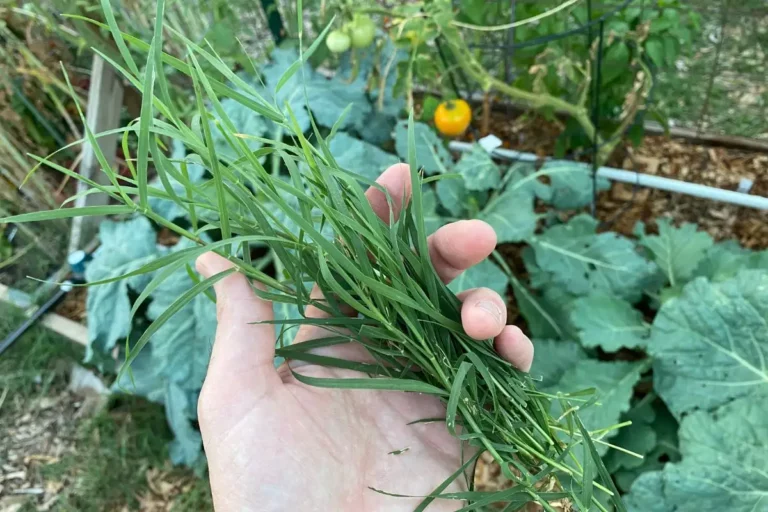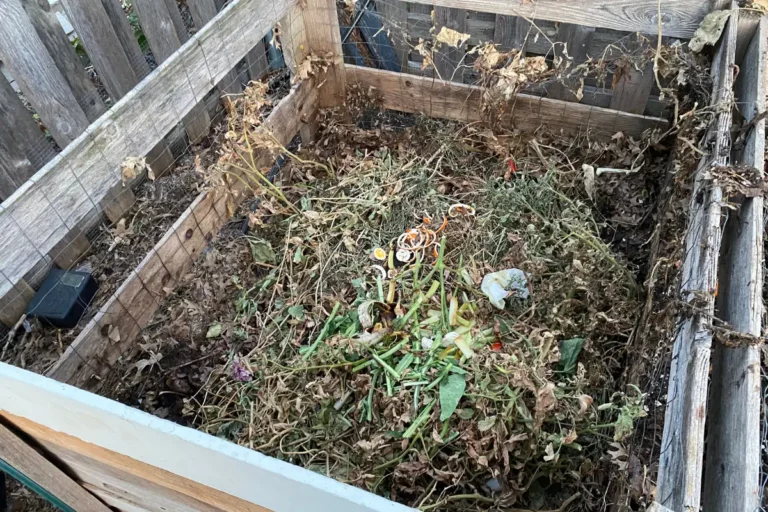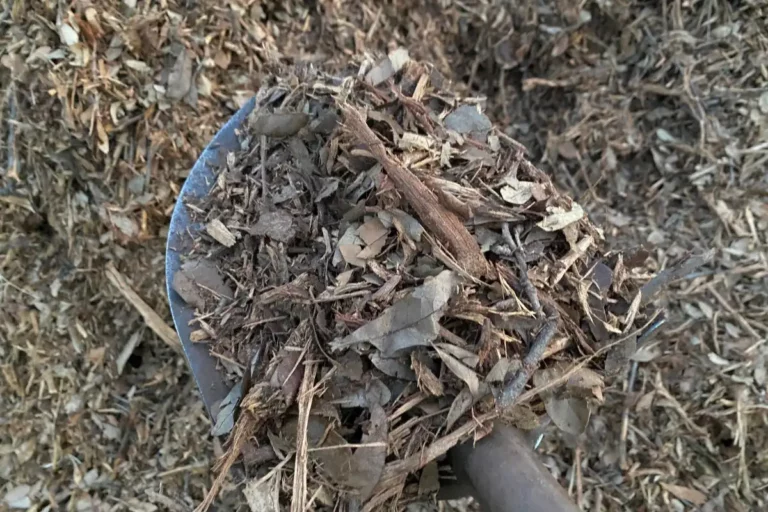Should You Cover Your Compost Heap in Winter?
A few years back, I left my compost pile as is when winter weather arrived—no cover, no protection, nothing. As things got frigid outside, sleet began to fall, and soon my compost was under a blanket—not of warm, insulating straw, but of cold, freezing ice.
Overnight, the compost pile turned into a frigid, ice-covered mass, and when I went outside in the morning, I couldn’t help but think: Could this have been avoided if I’d just covered the pile before winter arrived?
Covering compost during winter is generally a wise choice, especially in areas with harsh, cold conditions. Even a simple tarp can help protect the compost from rain, sleet, and snow, which can cause excessive moisture and a slow but steady loss of essential nutrients over time.
Covering compost can also help it retain a hint of its internal heat, but I find this is only the case in warmer regions. If it’s 0 F (-17.8 C), that compost pile isn’t going to retain any heat, no matter how many coverings you throw over it!
In this blog post, I’ll answer these important questions to help you make the best decision for your composting needs:
- How do you cover a compost pile in winter?
- Can I leave compost uncovered in winter?
- Does freezing help compost?
If you’ve got 2-3 minutes to spare, this article will give you an overview of all that’s involved in keeping your compost pile nice and tidy during the coldest months of the year.
By the end, you’ll be well-prepared to navigate the winter months and keep your compost heap healthy and productive.
How Do You Cover a Compost Pile in Winter?
I lived in New Jersey for many years—where the winter storms, snows, and freezes could be particularly nasty (thanks for nothing, Hurricane Sandy!)—but here in North Texas, the winters aren’t too harsh in comparison.
But whether it’s New Jersey, Texas, or elsewhere, when the winter months arrive, I recommend taking 2 simple steps to ensure that your compost pile remains healthy and productive.
First, be sure to spread a generous layer of mulched leaves on top of your pile.
Leaves are a fantastic, carbon-rich addition to compost and also provide a little natural insulation, protecting the compost underneath from harsh winter weather. The leafy layer essentially serves as a buffer of sorts, keeping the compost somewhat insulated from the direct effects of snow and sleet.
Second, once the leaves are in place, you’ll want to bring out a heavy-duty tarp and cover everything snugly.
A tarp is my preferred choice because it’s sturdy, waterproof, and easy to handle. And if you’ve got a compost bin, you can hold it down with heavy-duty bungee cords or spring clamps, making it easy to remove whenever you need to do so.
I don’t have a good photo of the last time I used spring clamps to cover my compost heap, but here’s a photo of how I use the same method to protect my raised beds during the relatively mild winters we have here in North Texas.

Whether it’s my compost pile or my raised beds, I cover them with a tarp, make sure everything’s pulled tight and snug, then clamp the covering down tightly using large spring clamps. Even in windy conditions, these clamps hold everything down.
In terms of my compost, the tarp prevents snow and sleet from adding excess moisture to the compost pile and potentially leaching out valuable nutrients.
Also, tarps are easy to unclamp and pull back when I want to add scraps from my kitchen compost container, which I do on a weekly basis throughout winter.
You can use different materials to cover your compost bin, such as old carpets or large pieces of cardboard, but these aren’t as weatherproof or sturdy as a simple tarp. They’ll also fall apart over time.
If you want to use both bungee cords and clamps, you can purchase bungee cord sets that come with tarp clamps.
Please note that covering your compost isn’t going to magically keep it warm or warm-ish during winter.
In extreme cold, your compost pile is going to freeze (unless it’s massive).
However, in more temperate regions, the combination of leaves and tarp can keep your compost pile somewhat warmer than the ambient outside temperatures.
I’m not interested in keeping my compost hot during winter but rather in maintaining an environment conducive to the slow, steady composting process, allowing it to continue somewhat even during the colder months of the year.
Covering your compost pile in winter is not a labor-intensive chore. You just need a few minutes and the right materials.
When covered snugly—whenever you’re not adding dead leaves or kitchen scraps to it—your compost will lie somewhat dormant when it’s really cold outside. But the worms and microbes will get going as temperatures warm up, giving you a rich, nutrient-dense compost ready to energize your garden for the new growing season.
Now that I’ve told you why I cover my compost during the cold winter months, let’s look at what happens when you don’t.
Can I Leave Compost Uncovered in Winter?
At the community garden where I lend a hand, we’ve chosen a different route for our compost bins.
Unlike my personal compost pile at home, we leave these community bins uncovered throughout the winter months, and seeing this has provided some interesting insights into winter composting.
Those uncovered compost bins, exposed to the elements, undergo a transformation during the winter.
The compost, which used to be full of insect activity, turns relatively inert as temperatures dip.
Worms, which play a crucial role in breaking down the organic matter in the compost, vacate the bins entirely, driven away by the cold. At this point in winter, the ice-laden compost appears entirely lifeless.
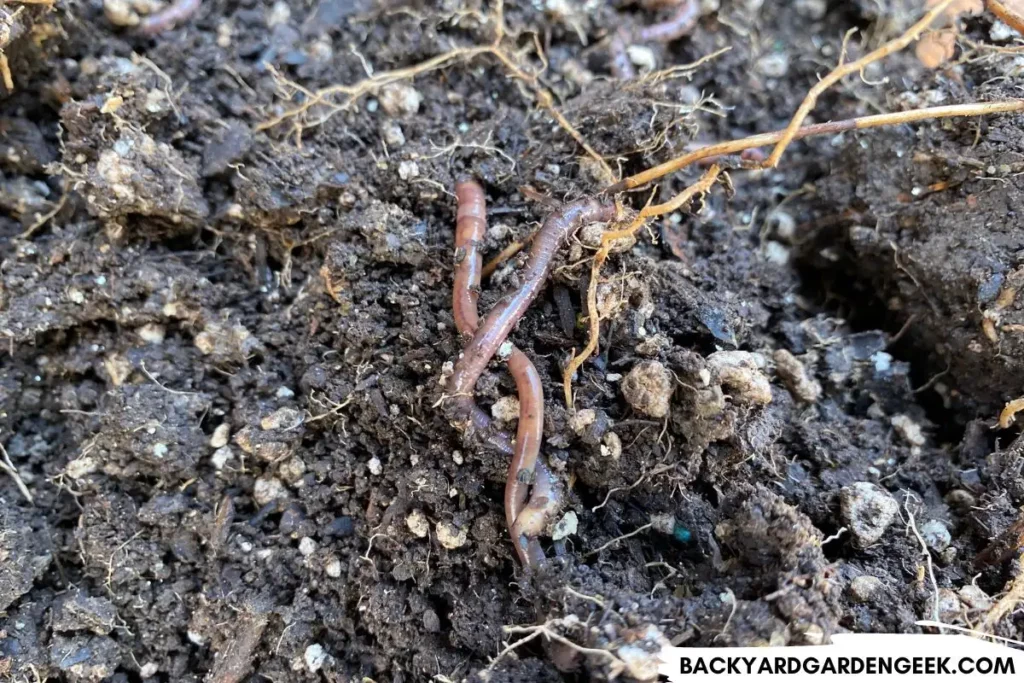
This slowdown in decomposition is due entirely to cold outdoor temperatures. Microorganisms, like bacteria and fungi, play a pivotal role in composting, but they become less active in the cold.
The worms, too, find it difficult to survive frigid weather and often migrate back into the native soil to wait out the winter. The compost bin, now devoid of its tiny helpers, enters a state of dormancy.
However, this seeming inactivity doesn’t mean the composting process has stopped entirely. Instead, it’s merely slowed down, hibernating along with the rest of the garden during the winter months.
But as the ice-covered compost bin starts to thaw in early spring, it slowly comes back to life. The warmer temperatures recall the worms from the native soil, and they start breaking down organic matter all over again.
The microorganisms, too, get going again, their activity increasing as things warm up outside.
This guarantees that the composting process will accelerate as winter gives way to spring. As the compost pile decays and shrinks, you’ll find rich, crumbly compost at the bottom, ready to be removed and either added to a bin designed for finely composted material or scooped in and around your garden beds.
The uncovered bins at our community garden demonstrate that compost can weather the winter months uncovered, but the decomposition process will stop entirely.
In fact, I’ll often cover my beds with finished compost at the beginning of winter, right before things turn cold. That way, any worms that are in there will have time to migrate into the soil, and the compost will function as a mulch-like layer that’ll give my beds a nutrient boost come spring.
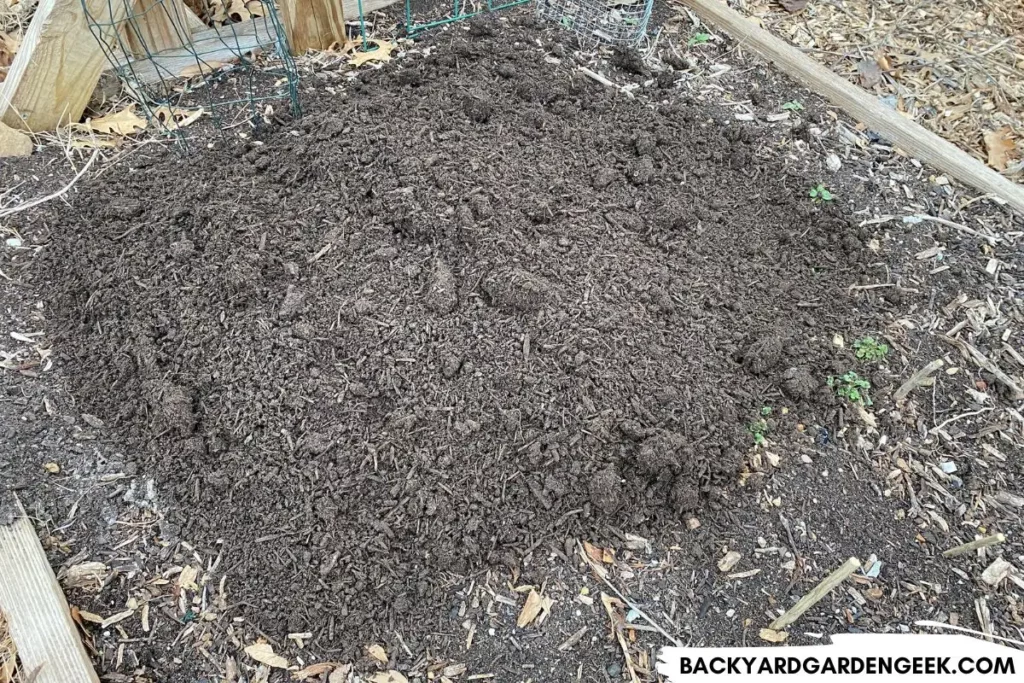
But if you’re compost isn’t yet finished, you’ll want to cover it. The more you protect it from the elements—while ensuring that it still gets a little air circulation—the greater the likelihood that it’ll retain a bit of heat and thus retain some microorganism activity in the central area of the compost.
Of course, once warmer temperatures return, you’ll want to uncover the compost, and make sure it gets some water if it’s dried out over time, encouraging the decomposition process to get going again.
But all of this raises a few final questions: What about freezing weather? Will it hurt your compost? And can exposure to the elements hurt the nutrient makeup of your compost in any way?
I’ll give you a quick overview below that covers each of these important topics.
Does Freezing Weather Help or Hurt Compost?
Freezing temperatures have a unique effect on the organic materials in your compost, particularly plant cells.
Each plant cell is like a microscopic water droplet. When freezing temperatures arrive, these cells freeze and their cell walls rupture.
This is why, after a hard freeze, your plants will look entirely wilted and dead. Their cells have exploded, and there’s no longer any way for the plant to distribute nutrients throughout its system.

For plants that you were hoping to keep alive during colder weather, this is a terrible thing, but for composted materials, this is surprisingly beneficial.
Broken cell walls then make it easier for microorganisms to access and break down the organic matter once the temperatures rise and the composting process resumes. This is one way in which freezing temperatures can actually help the composting process.
However, while freezing temperatures break down plant cells, they have a different effect on the microorganisms and worms in your compost pile.
Both microorganisms and worms are ectothermic, which means their body temperatures are influenced by the temperature of their surroundings.
When the compost pile freezes, the microorganisms slow down and become inert, and the worms get out of there as quickly as possible to escape the cold.
This microorganism dormancy (plus the lack of worm activity) leads to a slowdown in the decomposition process, something that’s normal and expected in composting during winter.
But don’t let this slowdown cause you concern.
On the one hand, it’s a natural part of composting and doesn’t negatively impact the end product.
On the other hand, the warmer you can keep your compost, the higher the likelihood that you’ll continue to see some microorganism activity in the ceter of the pile. With a large enough compost bin, some warms might even decide to stick around.
But what about carbon, nitrogen, and other nutrients? Will exposure to freezing temperatures or the elements result in fewer nutrients in the compost come spring?
Generally speaking, leaving a compost pile uncovered during winter—and exposing it to sleet, rain, and snow on a regular basis—can result in some nutrient loss.
When excessive moisture saturates a compost pile, that can lead to the leaching of nutrients (particularly nitrogen) into the surrounding soil.
This usually isn’t a huge problem as long as you’re adding lots of nitrogen-rich materials to your compost, but why would you risk losing nutrients if you can simply cover the compost pile?
Furthermore, too much moisture creates a soggy environment that can hamper aeration.
Covering your compost helps to manage the moisture level, thereby safeguarding the nutrient content and ensuring a rich, well-balanced compost come springtime.
Whether you choose to cover your compost or leave it exposed to the elements, remember that composting is an ongoing process. Even when it seems like nothing’s happening, nature is at work, so keep adding brown and green materials—and as many kitchen scraps as possible!—and you’ll have awesome compost in 6-8 months.
Further Reading
Do you like reading compost-related articles? If so, you might like these as well:
- 50 Plants You Should Never Compost (and Those You Should)
- 50+ Cheap Nitrogen Sources for Your Compost Pile
- Composting Pizza Boxes: A Simple, Step-by-Step Guide
- Do Raised Beds Need Yearly Compost? (Here’s What to Do)
- Don’t Compost These Weeds (30+ Plants to Avoid)
- Filling Raised Beds with Just Compost: Should You Do It?
- Is Dawn Dish Soap Safe to Compost?
- Is Your Leftover Pizza Compost-Friendly?
- Should I Put Cardboard at the Bottom of My Compost Bin?
- What Goes at the Bottom of a Compost Pile?


